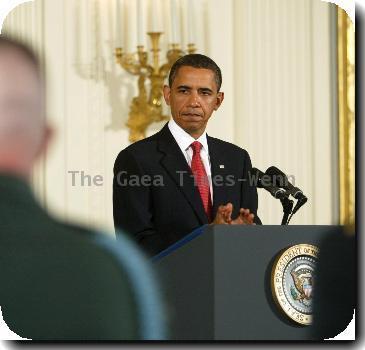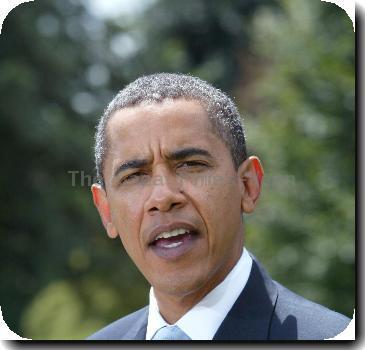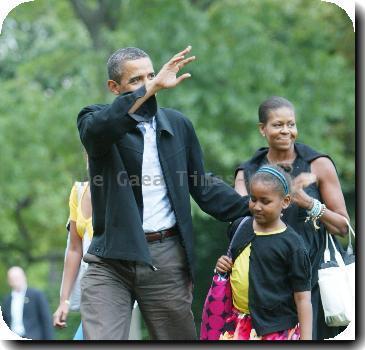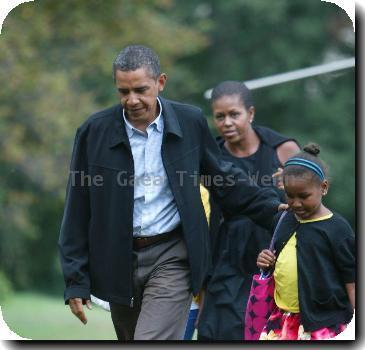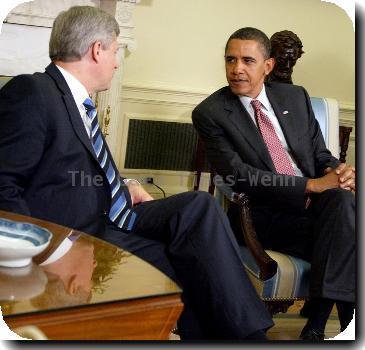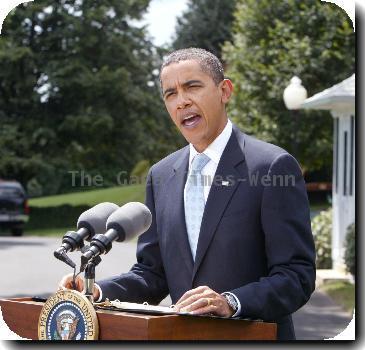Obama to tell nation he’ll order 30,000 more troops to Afghanistan, begin exit within 2 years
By Jennifer Loven, APTuesday, December 1, 2009
Obama ordering 30,000 more troops to Afghanistan
WASHINGTON — President Barack Obama is dispatching 30,000 more troops to Afghanistan, accelerating a risky and expensive war buildup, even as he assures the nation that U.S. forces will begin coming home in July 2011. The first new Marines will join the fight by Christmas.
The escalation — to be completed by next summer — is designed to reverse significant Taliban advances since Obama took office 10 months ago and to fast-track the training of Afghan soldiers and police toward the goal of hastening an eventual U.S. pullout. The size and speed of the troop increase will put a heavy strain on the military, which still maintains a force of more than 100,000 in Iraq and already has 68,000 in Afghanistan.
Obama’s Tuesday evening speech to cadets at the U.S. Military Academy at West Point, N.Y., to be broadcast nationally, ends three months of exacting deliberations that won praise from supporters and criticism from opponents. Former Vice President Dick Cheney said Obama was “dithering,” too inexperienced to make a decision on the troop buildup requested in September by commanding Gen. Stanley McChrystal.
Senior officials said Obama would underscore his commitment to stabilizing Afghanistan and scouring corruption out of the government of President Hamid Karzai. Obama has vowed to prevent Afghanistan from again becoming a safe haven for al-Qaida boss Osama bin Laden and his terrorist organization.
Most of the new forces will be combat troops. Military officials said the Army brigades most likely to be sent will come from Fort Drum in New York and Fort Campbell in Kentucky. Marines, who will be the vanguard, will most likely come primarily from Camp Lejeune in North Carolina.
There will be about 5,000 dedicated trainers in the 30,000, showing the emphasis on preparing Afghans to take over their own security. And the president is making clear to his generals that all troops, even if designated as combat, must consider themselves trainers.
Announcing a start to a U.S. withdrawal by July 2011 does not tie the United States to an “end date” for the war, officials said. They all spoke on condition of anonymity because the speech had not been delivered.
The address could become a defining moment of the Obama presidency, a political gamble that may weigh heavily on his chances for a second White House term. It represents the beginning of a sales job to restore support for the war effort among an American public grown increasingly pessimistic about success — and among some fellow Democrats in Congress wary of or even opposed to spending billions more dollars and putting tens of thousands more U.S. soldiers and Marines in harm’s way.
A new survey by the Gallup organization, released Tuesday, showed only 35 percent of Americans now approve of Obama’s handling of the war; 55 percent disapprove.
Even before the president spoke, his plan was met with skepticism in Congress, where Sen. Russ Feingold, D-Wis., and liberal House Democrats threatened to try to block funding for the troop increase.
Sen. Carl Levin, the Michigan Democrat who chairs a military oversight panel, said he didn’t think Democrats would yank funding for the troops or try to force Obama’s hand to pull them out faster. But Democrats will be looking for ways to pay for the additional troops, he said, including a tax increase on the wealthy although that hike is already being eyed to pay for health care costs. Another possibility is imposing a small gasoline tax that would be phased out if gas prices go up, he said.
Meanwhile, Republicans said that setting a timetable for withdrawal would demonstrate weakness.
“The way that you win wars is to break the enemy’s will, not to announce dates that you are leaving,” said Sen. John McCain of Arizona, the top Republican on the Senate Armed Services Committee and Obama’s campaign rival in last year’s presidential race.
If the timeline for the troop increase holds, it will require a costly logistical scramble to send in so many people and so much equipment almost entirely by air. It will also probably require breaking at least an implicit promise to some soldiers who had thought they would have more than 12 months at home before their next deployment.
At the same time, NATO diplomats said Obama was asking alliance partners in Europe to add 5,000 to 10,000 troops to the separate international force in Afghanistan. Indications were the allies would agree to a number somewhere in that range. The war has even less support in Europe than in the United States, and the NATO allies and other countries currently have about 40,000 troops on the ground.
The main mission of the new troops will be to reverse Taliban gains and secure population centers in the country’s volatile south and east. The addition of some Marines before year’s end would provide badly needed reinforcements to those fighting against Taliban gains in southern Helmand province.
Obama briefed dozens of key lawmakers Tuesday afternoon, before setting off for West Point.
Late Monday, the president spent an hour on a video conference call with Karzai. The White House said Obama told the Afghan leader “that U.S. and international efforts in Afghanistan are not open-ended and must be evaluated toward measurable and achievable goals within the next 18 to 24 months.”
On Tuesday Obama contacted Pakistan President Asif Ali Zardari to tell him the United States wanted to open a long-term commercial and security relationship. Obama also had planned to speak of a need to help Pakistan stabilize itself from the threats it faces not only from al-Qaida but Taliban forces that are increasingly behind terrorist bombings in that country, officials said.
The United States went to war in Afghanistan shortly after the Sept. 11, 2001, al-Qaida terrorist attacks on the United States.
Bin Laden and key members of the terrorist organization were headquartered in Afghanistan at the time, taking advantage of sanctuary afforded by the Taliban government that ran the mountainous and isolated country.
Taliban forces were quickly driven from power, while bin Laden and his top deputies were believed to have fled through towering mountains into neighboring Pakistan. While the al-Qaida leadership appears to be bottled up in Pakistan’s largely ungoverned tribal regions, the U.S. military strategy of targeted missile attacks from unmanned drone aircraft has yet to flush bin Laden and his cohorts from hiding.
AP White House Correspondent Jennifer Loven and National Security Writer Anne Gearan contributed to this report.
Tags: Afghanistan, Asia, Asif Ali Zardari, Barack Obama, Central Asia, Christmas, District Of Columbia, North America, Pakistan, South Asia, Terrorism, Troop Deployments, United States, Washington
